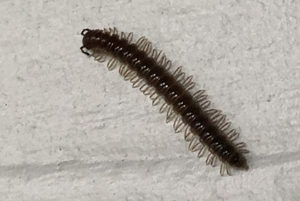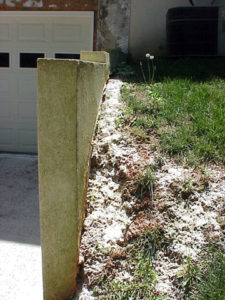Millipede Migration
go.ncsu.edu/readext?606502
en Español / em Português
El inglés es el idioma de control de esta página. En la medida en que haya algún conflicto entre la traducción al inglés y la traducción, el inglés prevalece.
Al hacer clic en el enlace de traducción se activa un servicio de traducción gratuito para convertir la página al español. Al igual que con cualquier traducción por Internet, la conversión no es sensible al contexto y puede que no traduzca el texto en su significado original. NC State Extension no garantiza la exactitud del texto traducido. Por favor, tenga en cuenta que algunas aplicaciones y/o servicios pueden no funcionar como se espera cuando se traducen.
Português
Inglês é o idioma de controle desta página. Na medida que haja algum conflito entre o texto original em Inglês e a tradução, o Inglês prevalece.
Ao clicar no link de tradução, um serviço gratuito de tradução será ativado para converter a página para o Português. Como em qualquer tradução pela internet, a conversão não é sensivel ao contexto e pode não ocorrer a tradução para o significado orginal. O serviço de Extensão da Carolina do Norte (NC State Extension) não garante a exatidão do texto traduzido. Por favor, observe que algumas funções ou serviços podem não funcionar como esperado após a tradução.
English
English is the controlling language of this page. To the extent there is any conflict between the English text and the translation, English controls.
Clicking on the translation link activates a free translation service to convert the page to Spanish. As with any Internet translation, the conversion is not context-sensitive and may not translate the text to its original meaning. NC State Extension does not guarantee the accuracy of the translated text. Please note that some applications and/or services may not function as expected when translated.
Collapse ▲The hot dry weather has caused millipedes to move in search of moister areas which often means they crawl up and over patios, decks, siding and inevitably indoors. This usually leads to calls and emails about what can be done to stop this home invasion. It may be a small consolation that I get the same number of calls from both homeowners and pest management professionals seeking the magic bullet to stop this mass movement. One fact that has remained over the years, few pesticides have the ability to put even a small dent in this multi-legged pest. When the weather is extremely dry, the problem is often that people use too little spray volume to coat the soil and foundation. This doesn’t mean excess pesticide; it’s the water that is needed to get good coverage.
For that reason, watering the area before spraying can actually help. Frustration will often lead some people to apply (more likely “overapply”) insecticidal dusts which remain on the surface (until the first major rainfall) where it the residue can pose a hazard to children and pets. Another problem is that deep layers of mulch up near a foundation prevent pesticides from reaching areas below where millipedes are more likely to be found.
Moderate rainfall will actually help slow the movement and keep millipedes where they are, but many areas of the state are likely to see excess rainfall this weekend. Heavy rains can have the opposite effect by saturating the soil causing the millipedes to seek higher ground (i.e., “your foundation and your home”).




